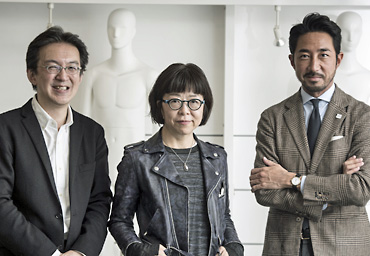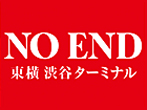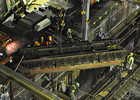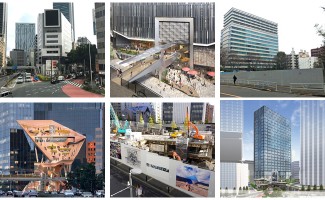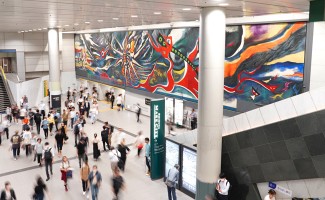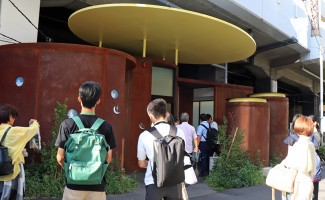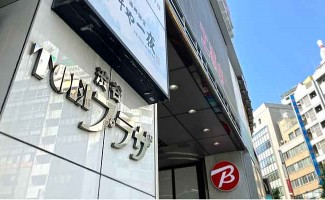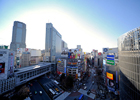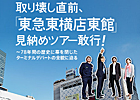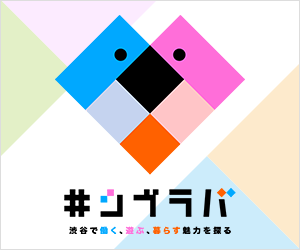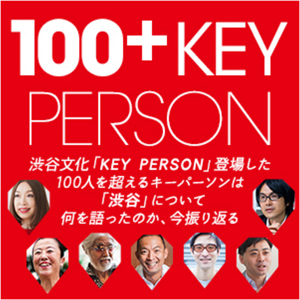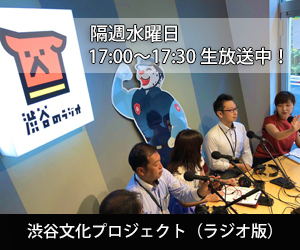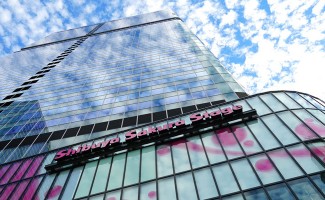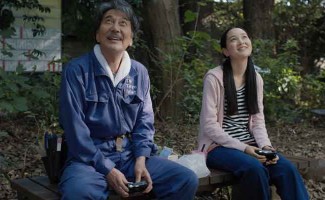Shibuya keeps sending constantly new movements such as "DC" "Shibu Kaji" "Gal", etc. Why are so many people attracted to Shibuya so much? I greeted three key people who kept watching the streets of Shibuya for a long time and had them talk about "Shibuya's fashion culture" on a theme.
Shibuya with overwhelmingly large number of streets including Koen street
West:Can you easily tell me the transition of "Shibuya fashion" from the 1980s?
Takano:At Across, since August 1980 we have been conducting "Fixed Point Observations" to consider the fashion and culture of young people every month, this year is 38 years. Looking back on the trend from the 1980's, Ivey, Preppy, Nutra, Hamathra, Bamboo shoots, New Wave and so on. After that, magazine culture and American culture came in and changed from the DC boom to Shibuji Kaji around 1988. It was an era of enjoying the creation of designers.
West:Preppy and nostalgic. Looking back on this, the movement of fashion was very intense in the 80's.
Takano:Yes. In those days when people born in the 1960s were young people, fashion was one of the identities to express themselves to him and to them. It is a generation called "New Man". After that, it will be the generation of the mounds 'baby-boomer Junior'.
West:It is in the 90's. When did the squire come to Shibuya to buy clothes, when was it around?
Fixed field:It is probably around the second and third grade. It came to buy such as Beams and back drops. At that time, there was a shop called Beams Shibuya around the back of the electric hall .... After that, I will be working there (laugh).
Takano:I worked at the Shibuya store in Beams, right?
Fixed field:Well, that's right (lol)
West:How was the fashion trend in the 90's?
Takano:About 90 years ago, Ralph Lauren's "Navy Breaking" fitted 501 Levi's style into style. From the feeling of "buying and wearing" the previous brand, it was an era when "how to wear", fashion changed from simple consumption and ownership to the sense and styling of that person, how to express. After that, the Indies Designer boom came. Originally there was a soil where young designers were produced as in Harajuku as it is said to be an apartment maker, but at this time, the brands that populated small shops in one corner of Harajuku's old houses, the leading brand in Shibuya We opened a store in a commercial facility, started to participate in the Tokyo collection, a brand that challenged Paris corle ... It was a very interesting time.
Fixed field:I guess it is connected to the back side.
West:What is the difference between the 80s and 90s Shibuya fashion?
Takano:In the 1990s a variety of small capital creations came out and various times, domestic and overseas, the times when transmission began at a stretch with individuals and individuals. Although there is a net now, since it was not at that time, I think that individuals were working in the underground a while ago. It is also this time that a lot of fashion snap type magazines came out.
West:It is an unprecedented culture that modeles the fashion of a person walking along the road normally. Speaking of the editor's point, was the stage of the snaps that resonate to the readers, was Shibuya as well?
Fixed field:The ecology may be different, but Shibuya and Harajuku would be the main in Tokyo. Among them, Shibuya starts with Konen Territory, and it has overwhelmingly many streets.
Takano:Certainly Shinjuku does not have an image of "street" (laugh).
West:Shibuya has complicated topography and unevenness, and each street has a name and it may be easy to imagine in the head.
There is no other town like this, Shibuya where a wide variety of people live
West:What is the recent feature of Shibuya fashion?
Takano:Recently it is said that "a young child does not read a magazine", but reading it unexpectedly. Besides the magazines that are being sold now, I bought the old "Olive" etc in the secondhand bookstore, looking for the clothes on that fashion page in the clothing store and coordinating ....
Fixed field:It is messy messed up (laugh). Somehow, I feel that the era is warping extremely.
Takano:I think that parents' influence is also strong, but young people now are very few children with very high fashion deviation values. Not only the items sold at the shop from the beginning, but also all of the things including the father 's things and mother' s things are worn in flat. "Super Mix" is not the only paris collection (laugh).
West:It seems that personal editing power is getting really high. How was it when you were young?
Fixed field:The ability to capture quality is somewhat knowledgeable and has a place to acquire. On that point, when I was young, I was mixing with myself just like a "sense of that" in sense without knowledge, so when I look back at my coordination at that time, I am innovative, but honest I am very embarrassed (laugh). "Super Mix" is a word that seems to be exactly what Tokyo seems to be ... .... In the end there are lots of stuff. . Opportunities for overseas coverage in Milan, Paris, etc, have increased, and when I look at Japan from the outside, I was worried that what I thought was good is really outrageous .... Even when Shibu Kaji became popular, of course, I think that some people knew everything and they were buying ... .... Some of the people in various shops think that there are parts that I have bought with myself without understanding any foreign class class society at all. For example, suddenly a work brand, military wear, sports brand, sneakers, high brands and luxury brands, indian jewelry are mixed in there, among classical brands ... .... Looking from overseas, "Is that what it is?"
West:We were drinking it and buying it (laugh).
Fixed field:High school girls wear Burberry and wear a Shetland sweater, army bread, jeans, or Louis Vuitton in a dark blue blazer, but I wear American loose socks, seems to be Indian jewelry in the neck ...... It seems that the insanely sensation that ignored the class society at all became "Tokyo っ ぽ さ" at the moment when it became flat.
West:The concept of class class is not in Japan.
Takano:The majority of young people in urban areas in Asia, not only in Europe and the United States, are fast fashion. Young children rich and class are wearing sports and luxury brands, but Japan is roughly mixed. Especially Shibuya think that mix feeling is strong.
Fixed field:It is likely that the genres of the inhabitants are wide. There are also many streets. School girls, female college students, students, as well as music lovers, there are DJs and club bars. Some people work in department stores, others have luxury brands, and of course there are other people like ogasan, people living in it are mixed. There are not other such streets that are so funny.
Takano:Surely not.
West:In other words, is Shibuya a place where various people can live?
Takano:There are people working for companies, but there are many freelance people, people working independent, and many foreigners. There are many people who like cultural creative things rather than like festivals, I think that Shibuya is diverse in that direction.
Fixed field:Another thing that is different from Harajuku overwhelmingly is that the number of restaurants is not odd. Not only female high school girls and female college students, but also society people, Ogasan, that can be fun to Madam. Perhaps the number of eating and drinking establishments is a factor that various people come up with. New York is said to be "the melting pot of race", but Shibuya also has a wide variety of feelings from my point of view. It's enormously energetic, is not it?
